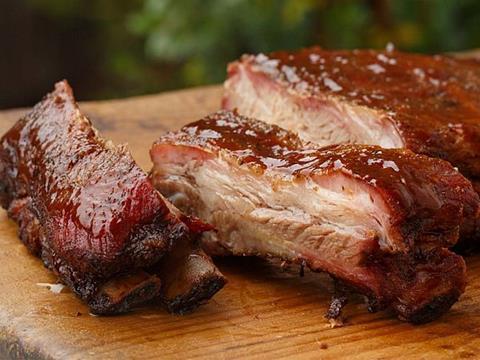
It’s hard to decipher exactly where the term barbecue came from. Legend has it, upon arriving in the Caribbean, the Spanish used the word barbacoa to describe the native method of slow-cooking meat.
So, what influences of ancient barbacoa cooking are still used today? Charlie Ahern, USA general manager at global packaging supplier Advanta, explains.
Despite its Caribbean roots, barbecue — more specifically barbecue ribs — are as about as red, white and blue as American cuisine gets. But, this hasn’t stopped the UK, Australia and other countries enjoying the delicacy.
In American cuisine, ribs usually refer to barbecue pork, or sometimes beef ribs. However, there are lamb, venison, goat, ostrich, crocodile and kangaroo ribs consumed in various parts of the world. More often than not, these are served with a barbecue-style sauce to complement the meaty flavor and fall-from-the-bone texture.
Barbecue is not merely throwing meat on a grill and covering it in a specific sauce. Traditionally, the terminology involves slow roasting or barbecuing the ribs to create a tender finish, often for as long as ten to twelve hours at a time. For busy consumers, this makes the meal a rare treat. Unless of course, there is a ready made version.
This desire for slow cooked ribs, without the time to spend hours cooking, presented an ideal opportunity for the ready meal market. One that the likes of CBQ, food manufacturer of Kingsford branded ribs in the US, grasped by the horns. Kingsford’s ready cooked baby back ribs are pre-cooked and marinated in Kansas style barbecue sauce. Eliminating the need to cook or prepare, the otherwise time-consuming product can be ready to eat in 15 minutes of cooking time.
However, pre-preparing a meal of this type is not without challenges, particularly with regards to packaging. Plastic packaging was a popular choice initially, as the material offered a leak proof pouch for the ribs and sauce to be stored in. However, squeezing out the ribs and sauce was often a messy and wasteful process, with sauce getting stuck inside the large pouch.
Adding this inconvenience to the huge industry pressures to move away from plastic, and it made sense that other packaging concept emerged. Aluminum packaging manufacturer, Advanta, provided an alternative.
Using an aluminum tray to store the ribs, sealed with a film, the consumer simply peels back the film and puts the tray in the oven for cooking. What’s more, smoothwall aluminum trays are compatible with vacuum sealing. This can extend the shelf life of the rib meal significantly, adding to the convenience of this new packaging method. Another benefit of an aluminum tray is that they can be placed directly on the barbecue grill, leaving no mess in the process.
Advanta has recently produced smoothwall trays, which are curved specifically for the rib shape. This ensures the ribs are positioned steadily in the tray, ready for vacuum sealing and transit. It is the first of its kind to market, providing a fuss-free alternative for rib ready meals.
We have a lot to thank the Caribbean barbacoa tradition for. The barbecue cooking method has established itself as a worldwide favorite and of course, rib as a classic American dish. Combining barbacoa with the convenience of well-design packaging is an accolade to our barbecuing predecessors. Looking to the future, all rib packaging will be aluminum.




















